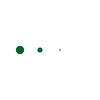The first time I had to implement Buttons in DataTables, I figured it’d be a simple copy-paste job. I was wrong.
What started as a quick enhancement turned into hours of frustration—scattered docs, plugin overload, and buttons that either didn’t show up or broke the table layout entirely.
Eventually, I cracked the code. I found a simple, reliable way to add Buttons in DataTables without bloating your project or losing control of your UI. If you’re looking for a no-nonsense solution that works out of the box, you’re in the right place.
Let me show you the trick that turns a standard DataTable into a powerful, interactive table in just minutes.
Adding Custom Buttons in DataTables
Now, let’s focus on the main course: adding custom buttons to your DataTables. These buttons can be tailored to your specific needs, enabling actions like saving, exporting, deleting, or anything else your application demands.
Adding custom buttons requires the use of the DataTables Buttons extension. To get started, ensure you’ve included the necessary resources in your project, including DataTables and the Buttons extension.
Creating Custom Buttons:
Let’s add a “Save,” “Export,” and “Delete” button to our DataTable:
$(document).ready(function() {
var table = $('#yourTableId').DataTable({
buttons: [
'copy', 'excel', 'csv', 'pdf', 'print',
{
text: 'Save',
action: function(e, dt, button, config) {
// Add your save logic here
}
},
{
text: 'Export',
action: function(e, dt, button, config) {
// Add your export logic here
}
},
{
text: 'Delete',
action: function(e, dt, button, config) {
// Add your delete logic here
}
}
]
});
});
In this code, we define custom buttons labeled as “Save,” “Export,” and “Delete” with associated actions.
Bonus: Adding Font Awesome Icons
To make your buttons visually appealing, you can add Font Awesome icons. First, ensure you’ve included Font Awesome in your project. Then, customize your buttons as follows:
{
text: '<i class="fas fa-save"></i> Save',
action: function(e, dt, button, config) {
// Add your save logic here
}
}
This example incorporates the “fas fa-save” icon from Font Awesome for the “Save” button.
· · ─ ·𖥸· ─ · ·
Custom Icons and Button Styling
Before diving into customizing icons and styles for your buttons in DataTables, it’s important to understand how the Buttons extension actually renders them.
By default, DataTables generates plain <button> elements with text. But with a little CSS—or better, with Bootstrap or Font Awesome—you can transform these into visually distinct, branded buttons that look and feel professional.
Custom styling often involves:
- Adding CSS classes (like
btn btn-primary) to style buttons - Inserting HTML markup (like
<i class="fas fa-download"></i>) for icons - Using external libraries like Font Awesome or Bootstrap Icons
This gives you total control over the aesthetics and UX of your DataTables implementation, making your buttons not only functional, but polished and intuitive.
Let’s break down how to apply these customizations in real-world code.
Custom Icons for Default Buttons:
You can also customize the icons for default buttons. For instance, let’s change the icon for the “Copy” button to a custom one:
$(document).ready(function() {
$('#yourTableId').DataTable({
buttons: [
{
extend: 'copy',
text: '<i class="fas fa-copy"></i> Copy',
className: 'custom-button'
},
// Add other buttons here
]
});
});
Here, we’ve changed the icon for the “Copy” button to a custom Font Awesome icon and added a custom CSS class for styling.
Styling Custom Buttons:
To style your custom buttons, you can use CSS. For example, let’s change the background color of the “Save” button:
/* CSS */
.custom-button {
background-color: #3498db; /* Change to your desired color */
color: #fff; /* Text color */
border: none;
padding: 10px 20px;
border-radius: 5px;
cursor: pointer;
}
.custom-button:hover {
background-color: #2980b9; /* Change to your desired hover color */
}
Apply this CSS to the button class or ID, and you can easily customize the button’s appearance.
Custom Buttons in Action
Now that you’ve added custom buttons, it’s time to see them in action. Test your buttons and their respective functions within your DataTable to ensure they perform as expected.
· · ─ ·𖥸· ─ · ·
Common Issues When Adding Buttons
Even seasoned developers run into issues with DataTables buttons. Here are a few common ones:
Buttons Not Showing Up
- Cause: The Buttons extension is not properly loaded.
- Fix: Make sure you’ve included both the
buttons.jsand its corresponding CSS.
<!-- Add these to your <head> -->
<link rel="stylesheet" href="https://cdn.datatables.net/buttons/2.4.1/css/buttons.dataTables.min.css">
<script src="https://cdn.datatables.net/buttons/2.4.1/js/dataTables.buttons.min.js"></script>action Callback Not Firing
- Cause: You’re initializing the table before the DOM is fully ready.
- Fix: Wrap your DataTable init code inside a
$(document).ready()orDOMContentLoaded.
$(document).ready()Buttons Rendered But Unstyled
- Cause: You’re using Bootstrap-styled buttons without including Bootstrap.
- Fix: Either include Bootstrap or remove the Bootstrap-specific
btn btn-primaryclasses.
🔧 Defining Reusable Button Types
When you find yourself reusing button logic across multiple tables, you can define reusable button types by extending $.fn.dataTable.ext.buttons.
Example: Reusable Export Button
$.fn.dataTable.ext.buttons.exportExcel = {
text: 'Export to Excel',
className: 'btn btn-success',
action: function (e, dt, node, config) {
// Reuse DataTables built-in export feature or trigger custom logic
window.open('/export/excel');
}
};
// Use in your DataTable like this:
$('#example').DataTable({
dom: 'Bfrtip',
buttons: ['exportExcel']
});This lets you clean up your config files and write once, reuse everywhere.
· · ─ ·𖥸· ─ · ·
Make Your DataTables Work For You
Getting Buttons in DataTables to behave shouldn’t feel like solving a puzzle with missing pieces. Now that you’ve seen how to do it cleanly and effectively, you’ve got the power to streamline user interactions and boost your frontend like a pro.
Don’t stop here—customization is where DataTables really shines. Keep experimenting, keep building, and make your tables do more than just display data.





Leave a Reply